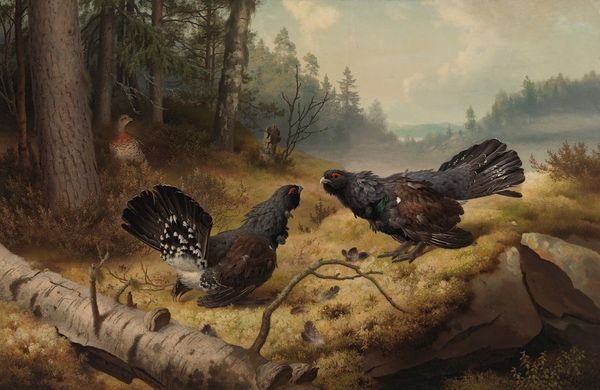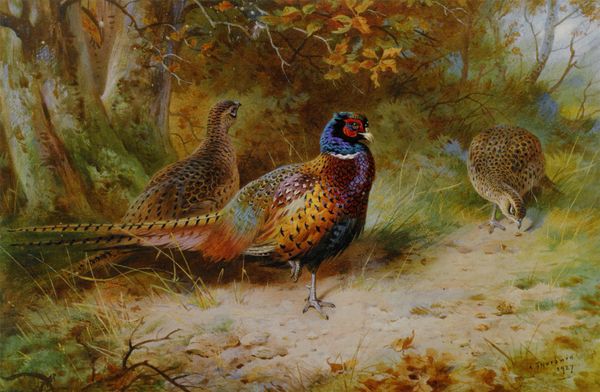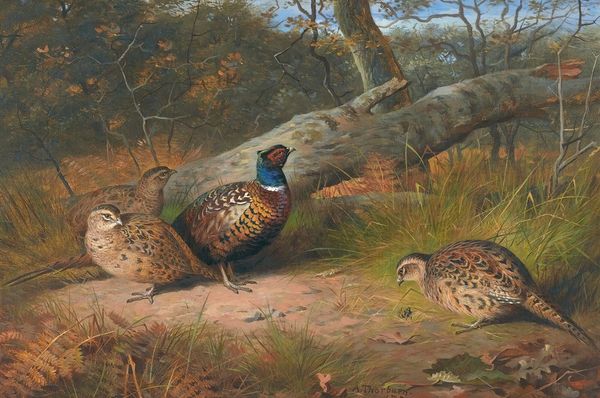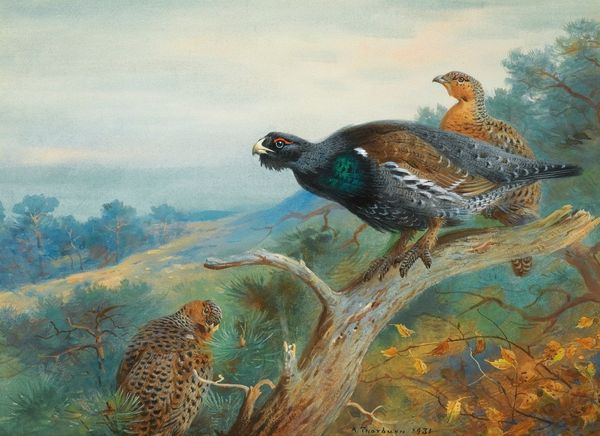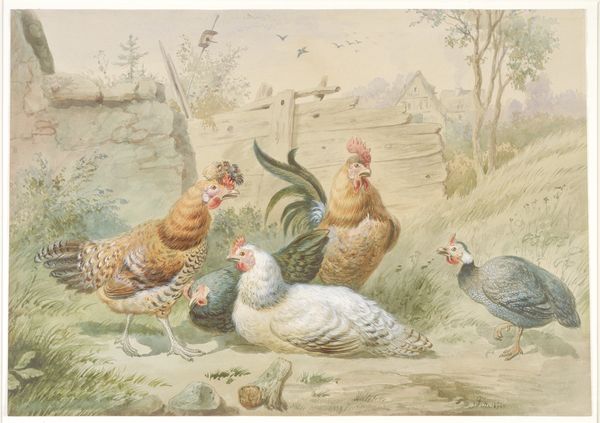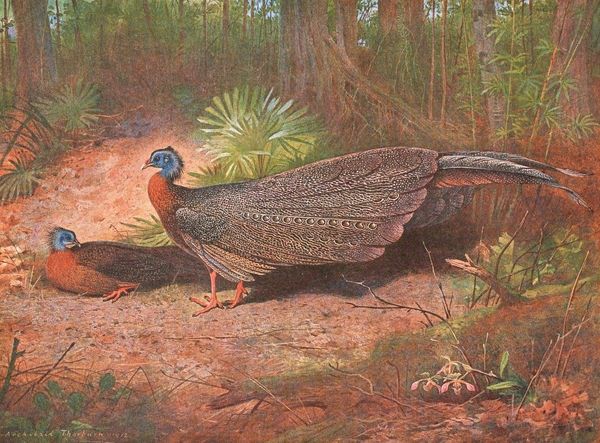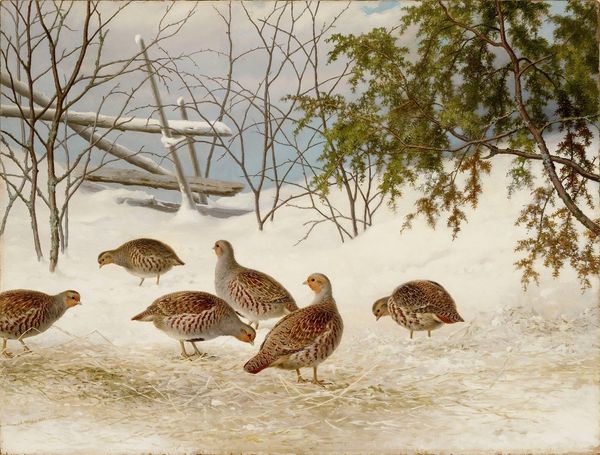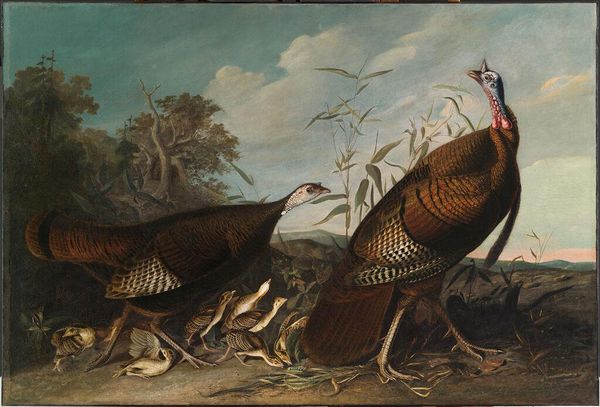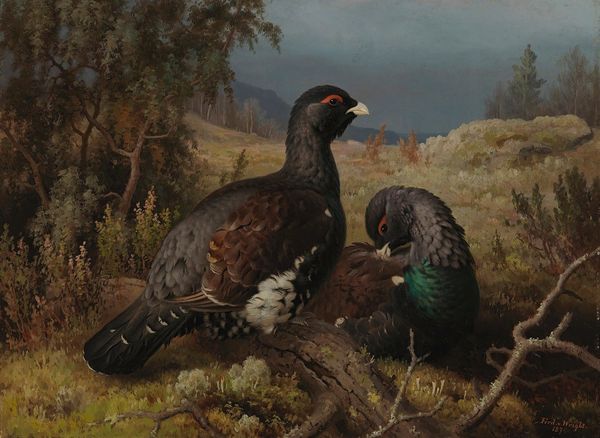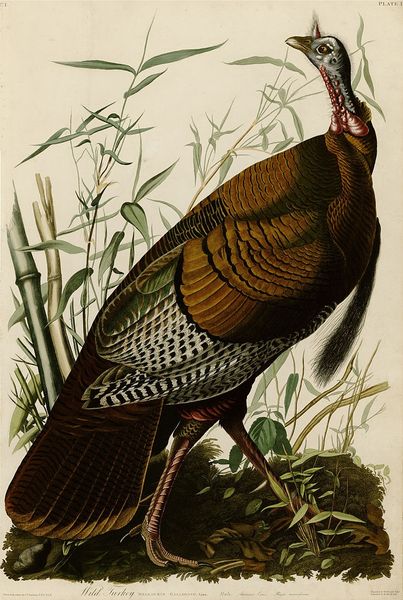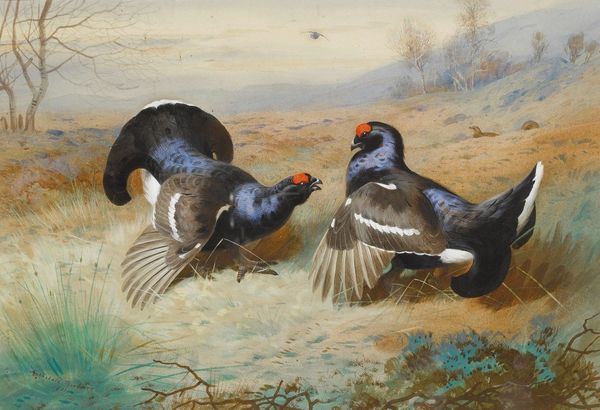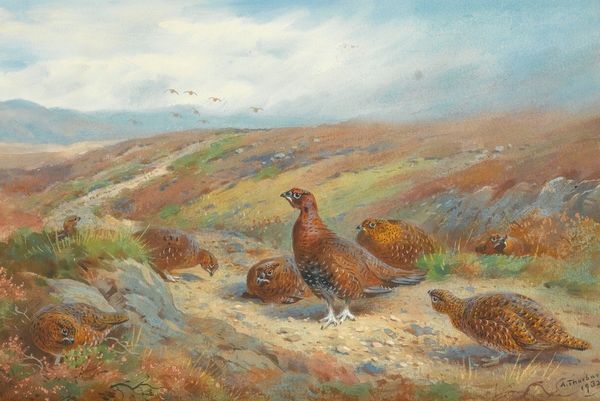
Copyright: Public Domain: Artvee
Curator: Well, isn't this a dramatic tableau. I'm immediately drawn to the contrast in textures – the soft moss against the stark lines of the tree trunks. Editor: Indeed. What we have here is "Capercaillies Courting," an oil painting by Ferdinand von Wright, created in 1862. It’s an interesting example of how genre painting could encompass the natural world at the time. Curator: "Courting" is right! Just look at that male capercaillie. He’s a striking symbol of virility with that impressive display. It almost feels performative. Editor: That display is critical to their mating rituals, of course, and representative of virility as you say. But I find it fascinating that the artist chose to frame this scene in a manner so aligned with Romantic ideals, considering the rising tide of Realism in art during that era. Von Wright emphasizes the untamed aspects of nature, locating this event within it to represent Finnish identity. Curator: Romanticism and a dose of Naturalism, certainly, judging by the detail on the mossy ground and those fantastic plumage patterns. Yet, those dense forest colours contribute to the sense of something grand and a bit…imposing. Do you think that contributes to its reception? Editor: I would say so. These images spoke to anxieties about land use, and a national mythology centered on Finnish forests. Capercaillies themselves held symbolic meaning within Finnish culture—strength, perhaps? Curator: It's true the image can speak to many things, which is what makes it so compelling. Considering its historical placement between genres, does this speak to a desire for something new, do you think? Or something foundational? Editor: I suspect both. The burgeoning sense of national identity in 19th-century Finland shaped artistic expression. Artists sought new ways to depict the local landscape, even something like birds, as a marker of identity. Curator: That contextual grounding really pulls the picture into focus. Von Wright gave these birds such character, transforming them into symbols larger than themselves. I feel a greater sense of narrative now too. Editor: Absolutely, these layers, seen through visual symbols and the socio-political conditions of Finland in the 1860's, offer us so much to explore and learn.
Comments
No comments
Be the first to comment and join the conversation on the ultimate creative platform.
